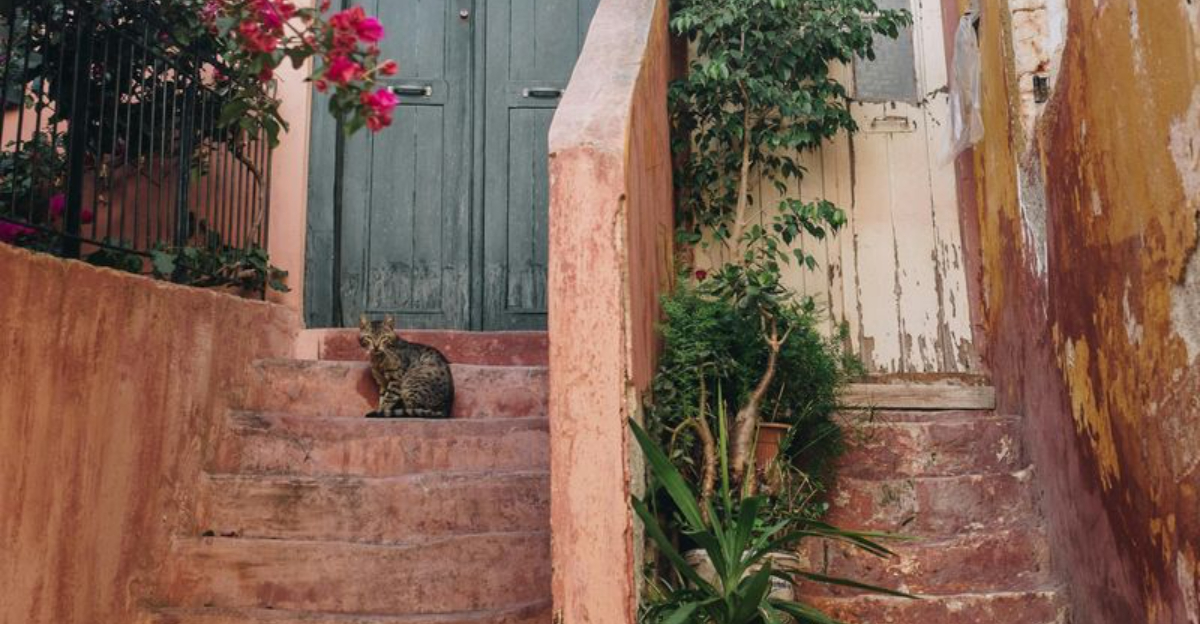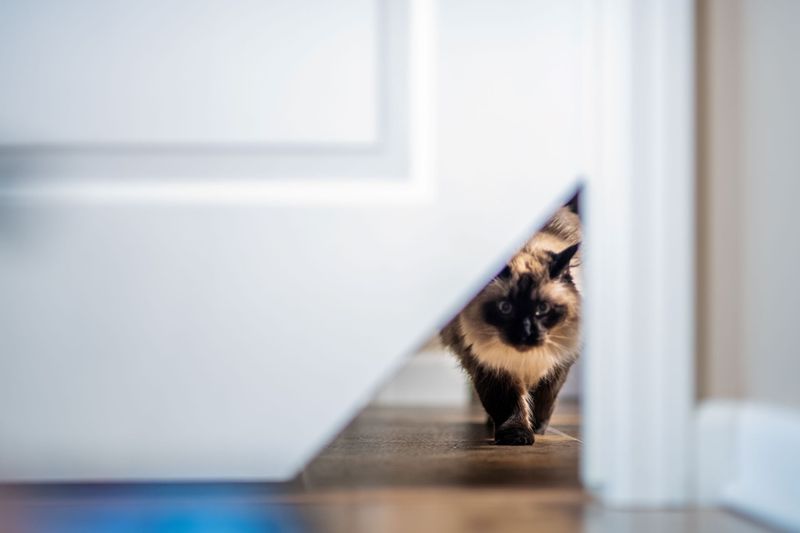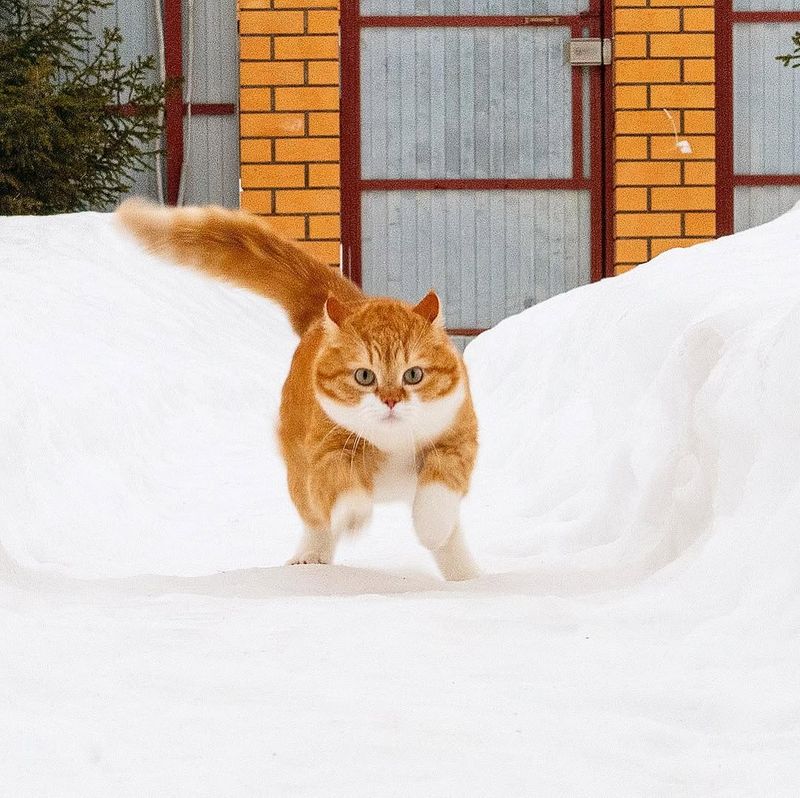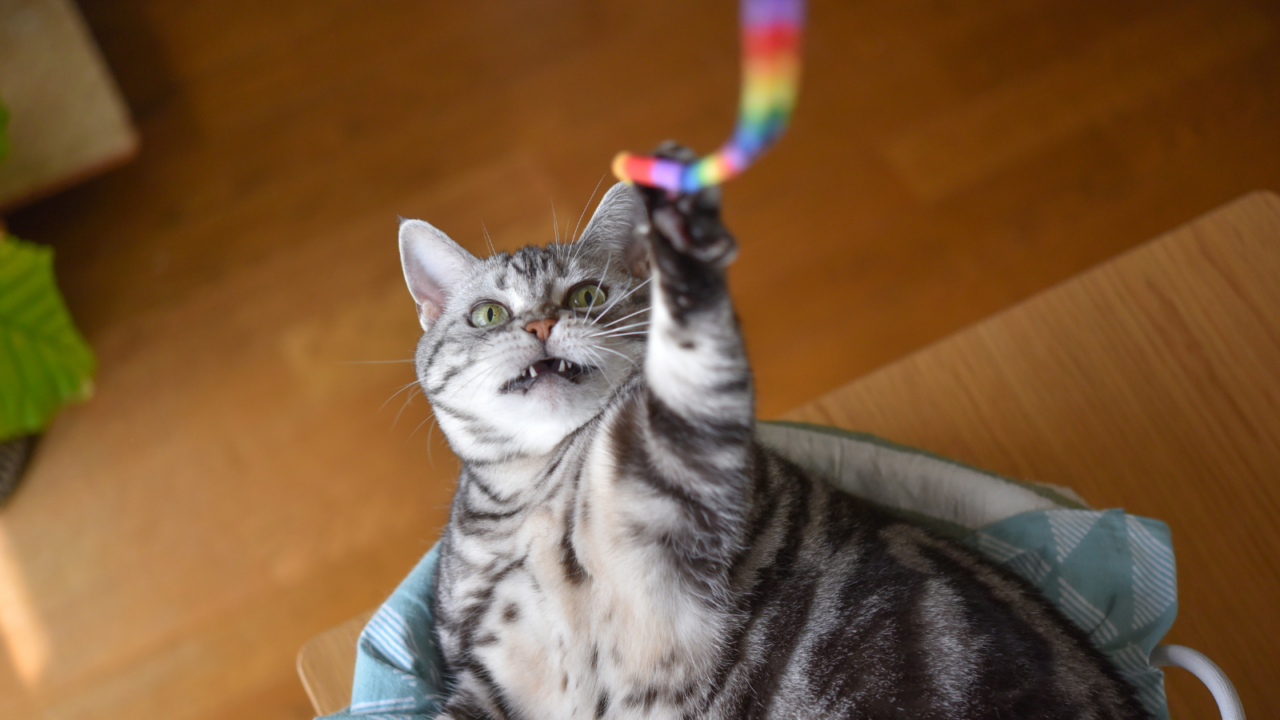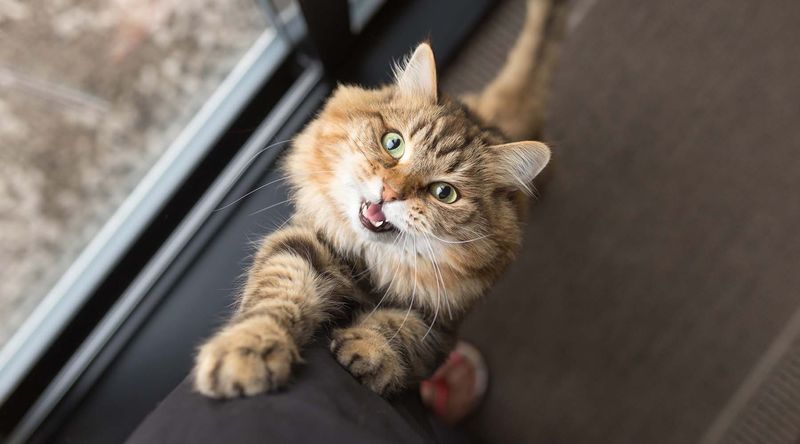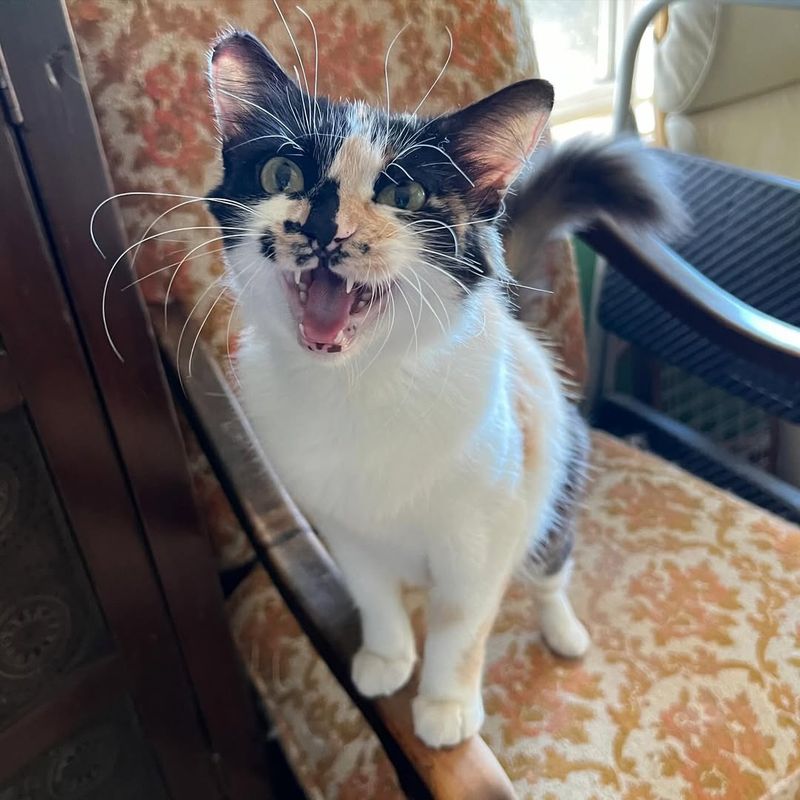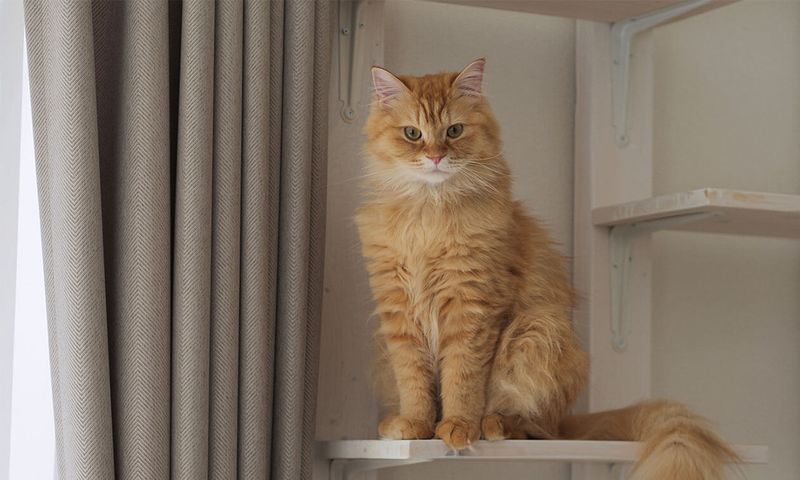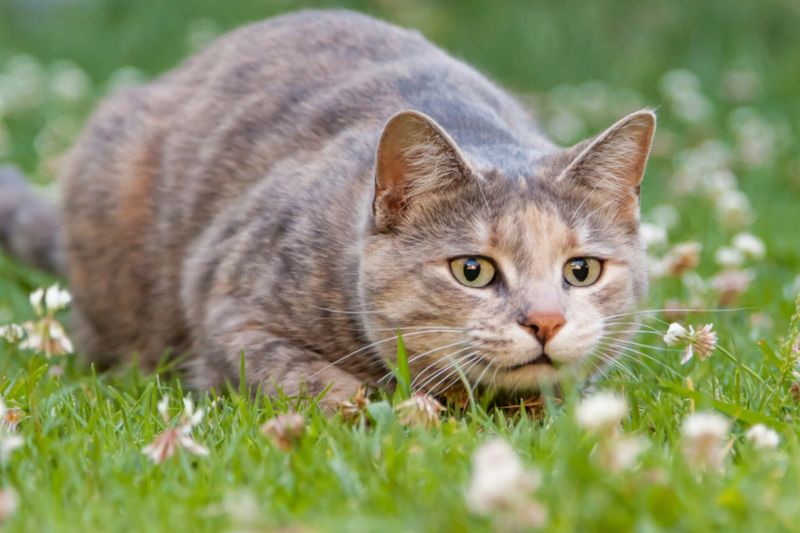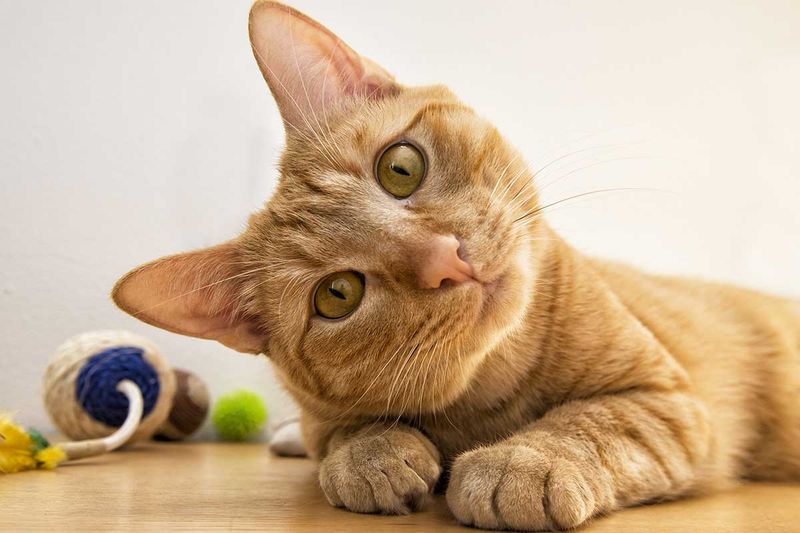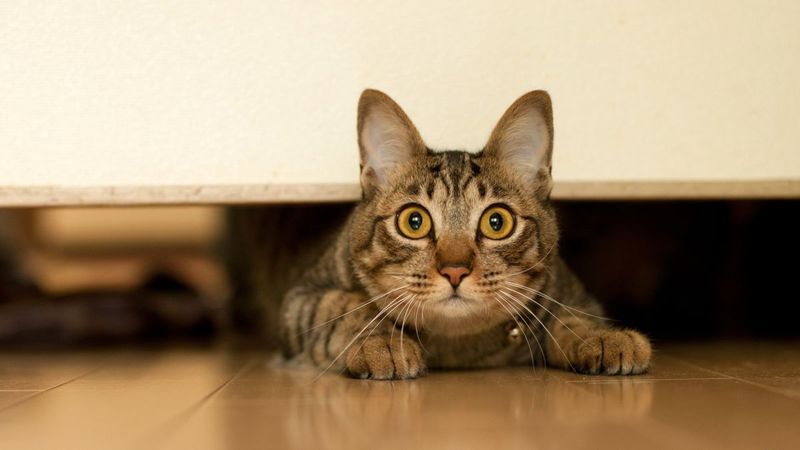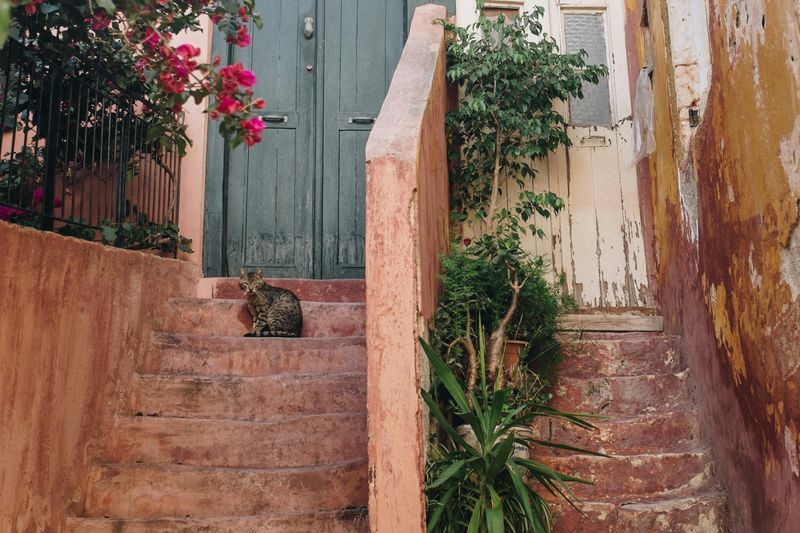📖 Table of Content:
- 1. Window Gazing
- 2. Door Hovering
- 3. Escape Attempts
- 4. Sudden Energy Bursts
- 5. Scratching at Barriers
- 6. Vocalizations
- 7. High Perches
- 8. Alert Posture
- 9. Curious Glances
- 10. Hunting Mimicry
- 11. Restlessness at Dawn/Dusk
- 12. Boredom Behaviors
- 13. Overreaction to Movement
- 14. Following You
- 15. Unsettled Sleep Patterns
Many cat owners often wonder whether their indoor companions secretly crave the freedom of the outside world. Many of these felines seem to display a curiosity that goes beyond their comfortable indoor environment. Their behavior can leave us questioning if there’s a deeper, instinctual longing for adventure. This natural inclination is both intriguing and endearing.
If your cat exhibits behaviors that suggest a desire to explore beyond the confines of your home, you might be witnessing their innate instincts in action. Their actions could be subtle hints at a yearning for more than just the indoor life. These behaviors might include intense window gazing or restlessness near doorways, all pointing toward a hidden adventurous spirit. It’s a fascinating glimpse into the wild nature that remains within them.
Each sign provides a unique insight into the adventurous desires that might be bubbling beneath the surface. By recognizing these hints, you can better understand your feline friend’s needs and perhaps find ways to enrich their environment. Embracing these instincts could lead to a happier, more fulfilled pet.
1. Window Gazing
Ever notice your cat spending hours perched by the window, eyes glued to the fluttering birds outside? This behavior might signal a deep longing for the sights and sounds of the outside world. Their intense focus and occasional tail twitch reveal an innate curiosity and desire to interact with the environment beyond the glass. Cats are natural hunters, and window gazing offers them a safe way to engage these instincts without leaving the comfort of home. It’s their version of watching TV, providing both entertainment and mental stimulation. Consider creating a cozy window perch to enhance their viewing pleasure.
2. Door Hovering
Does your feline friend often linger near doors, appearing as if they’re waiting for an invitation to step outside? This behavior is a telltale sign of their adventurous spirit. The door represents the threshold between the known and the unknown, sparking their curiosity. By hovering near entryways, cats express interest in exploring the world just beyond their reach. It’s a natural instinct, driven by their desire for new experiences and stimuli. Providing safe outdoor access, like a catio, can fulfill their craving for adventure while keeping them protected.
3. Escape Attempts
Cats often make daring escape attempts whenever a door or window is briefly opened. This behavior underscores their adventurous nature and eagerness to explore beyond their usual environment. Their quick reflexes and strategic planning reveal a keen awareness and determination to seize any opportunity for adventure. Such attempts can be both amusing and concerning for pet owners. To satisfy their curiosity safely, consider leash training or creating a secure outdoor play area. This way, cats can enjoy the freedom they crave without compromising their safety.
4. Sudden Energy Bursts
If your indoor cat suddenly sprints across the room, seemingly out of nowhere, it might be expressing pent-up energy. These spontaneous bursts of activity reflect their natural hunting instincts and desire for physical challenges, which are less accessible indoors. Providing interactive toys or engaging play sessions can help satisfy their need for exercise and adventure. These activities not only channel their energy but also strengthen the bond between you and your pet. Adventure isn’t just about exploration; it’s also about engaging with their environment in fun and stimulating ways.
5. Scratching at Barriers
Have you ever seen your cat scratching at windows or doors? This behavior can indicate their desire to explore beyond the barriers that confine them. The act of scratching is a natural behavior used to mark territory and maintain claw health, but it can also be a sign of frustration. To address this longing, offer scratch-friendly alternatives like posts or pads near these barriers. Ensure they’re placed strategically to redirect their focus. By doing so, you’re catering to their instincts while keeping your home intact. It’s about finding a balance between their needs and your household harmony.
6. Vocalizations
Increased vocalizations, especially when your cat is near a window or door, may indicate their longing for the outdoors. These sounds can be their way of expressing curiosity, excitement, or even frustration about not being able to explore. Cats use vocal communication to express a range of emotions, and in this context, it could be a call to the wild. Engaging them with stimulating indoor activities or providing a safe outdoor view can help soothe their yearning. Remember, a chatty cat may just be telling you about their adventurous dreams!
7. High Perches
Cats naturally seek out high perches to survey their surroundings, which is a behavior rooted in their instincts as predators. If your cat frequently perches on furniture or shelves, it might be longing for a better view of the outside world. By providing them with tall cat trees or window hammocks, you can cater to their desire to observe and feel secure. These elevated spots not only satisfy their curiosity but also provide them with a sense of control over their environment. Adventure can be about perspective, and offering the right vantage points is key.
8. Alert Posture
An alert posture near entryways, with ears perked and eyes focused, can signal your cat’s readiness to dash outside at any opportunity. This stance is a blend of curiosity and anticipation, reflecting their hunter instincts. To channel this energy safely, consider supervised outdoor play or secure window views. These options allow them to experience the excitement of the outdoors without the risks. Observe their posture and body language; it speaks volumes about their adventurous spirit and readiness to explore unknown terrains.
9. Curious Glances
Does your cat often glance towards doors or windows, even while engaged in play? These curious glances suggest an interest in what lies beyond their immediate environment. It’s an expression of their innate curiosity and desire for exploration. Encouraging this behavior with safe outdoor experiences or engaging indoor activities can satisfy their adventurous nature. Toys that mimic prey or puzzles can also stimulate their minds, offering an adventure from within. Every glance is a peek into their world of wonder and curiosity.
10. Hunting Mimicry
Indoor cats often mimic hunting behaviors by intensely stalking toys or shadows. This mimicry speaks to their natural instincts, honed over generations. Their focus, patience, and precise movements during play mirror the skills they would use in the wild. To cater to this instinct, provide a variety of toys that allow for chasing, pouncing, and capturing. Interactive play sessions not only satisfy their hunting drive but also offer mental and physical exercise. Adventure, for cats, is often found in the thrill of the hunt, even if it’s just a stuffed mouse.
11. Restlessness at Dawn/Dusk
If a cat seems restless during these times, it may be a sign of their instinctual desire to explore and hunt when the light is low. Creating engaging play routines during these periods can help satisfy their natural rhythms. Using toys that mimic the movement of prey can provide the adventure they seek. Recognizing these patterns allows you to align their indoor environment with their natural behaviors, fulfilling their adventurous spirit.
12. Boredom Behaviors
Signs of lethargy or disinterest in play can indicate boredom, a common issue for indoor cats longing for more stimulation. When the usual toys lose their appeal, it’s time to introduce new challenges. Rotating toys, introducing puzzle feeders, or creating interactive play sessions can revive their interest. Cats need mental and physical stimulation to stay happy and healthy, and exploring new activities can reignite their adventurous side. Remember, a change in routine can be as refreshing for them as an outdoor escapade.
13. Overreaction to Movement
Some cats exhibit strong reactions to outdoor noises or movements they perceive through windows. This heightened sensitivity can indicate their interest in the world outside. Their acute senses are tuned to detect even the subtlest of changes, and this reaction is part of their survival instincts. Providing a stimulating indoor environment with plenty of sights and sounds can help keep their senses sharp. This mimics the adventure they crave, offering a balance between indoor comfort and the excitement of the unknown.
14. Following You
If your cat persistently follows you towards doorways or windows, it’s likely an invitation to explore together. This behavior shows trust and a shared sense of adventure. Consider taking your cat on outdoor adventures with a harness and leash. This allows them to safely explore new environments while under your supervision. It’s a bonding experience that satisfies their curiosity and need for exploration. Whether indoors or out, sharing these moments strengthens your connection and fulfills their desire for adventure.
15. Unsettled Sleep Patterns
Disrupted or irregular sleep patterns in cats may hint at their instinctual drive to be active during optimal hunting hours. This nocturnal nature is part of their wild ancestry, which can sometimes clash with a domestic lifestyle. Align their playtimes with these active periods to create a satisfying routine. Interactive toys or late-night play sessions can help channel their energy appropriately. Understanding their natural rhythms allows you to provide an environment that caters to their adventurous spirit, keeping them content and engaged.
